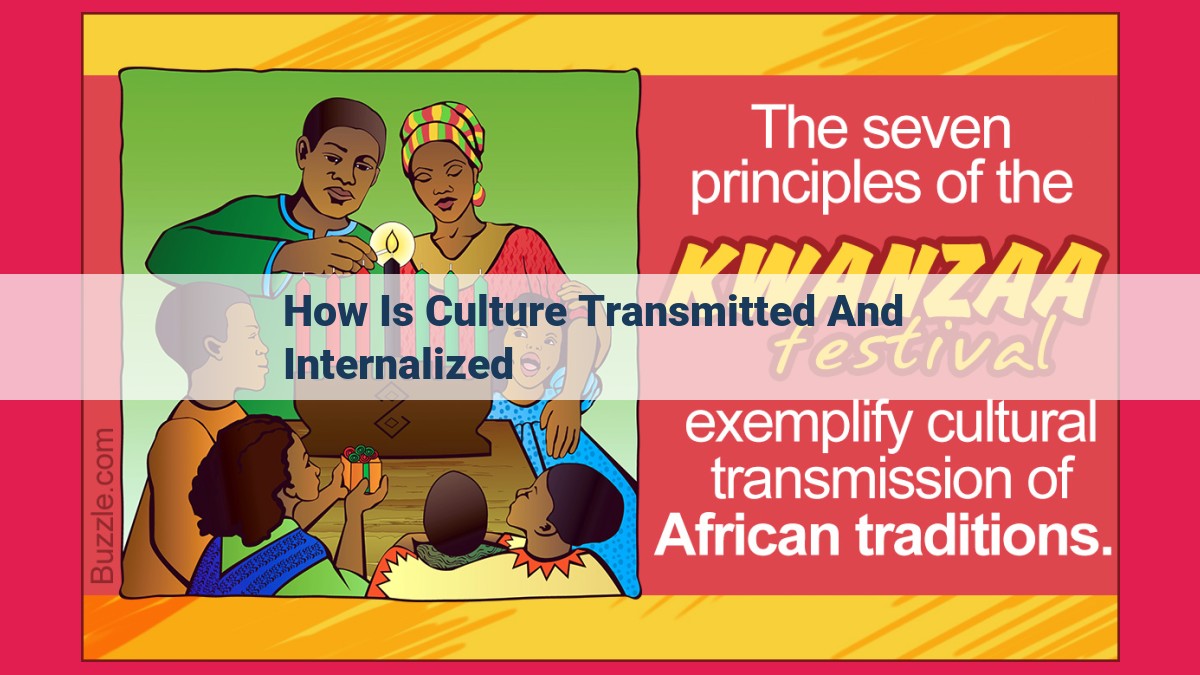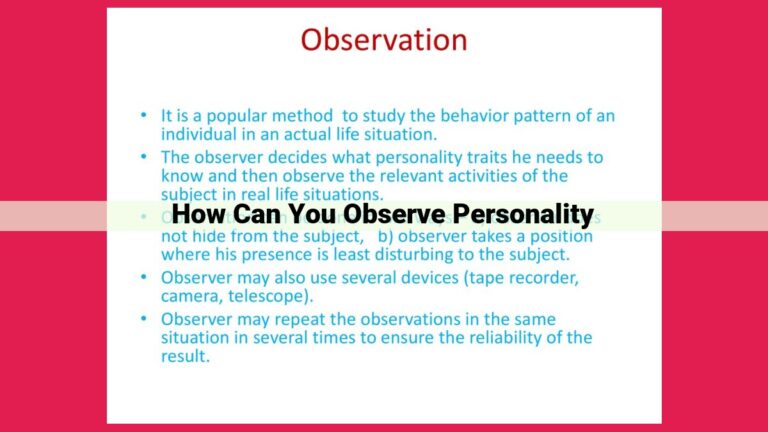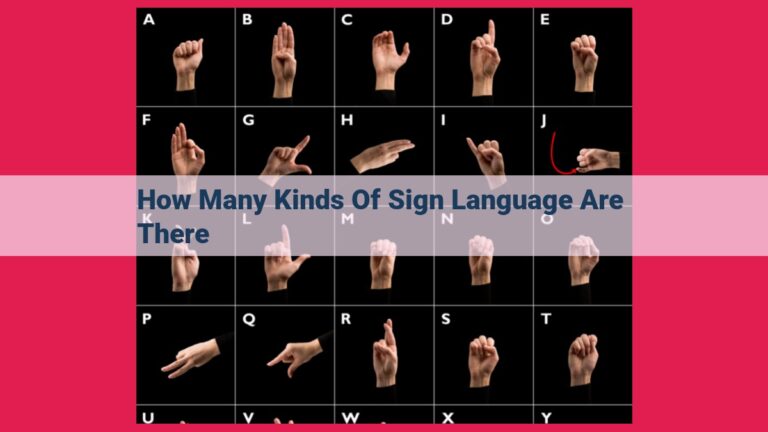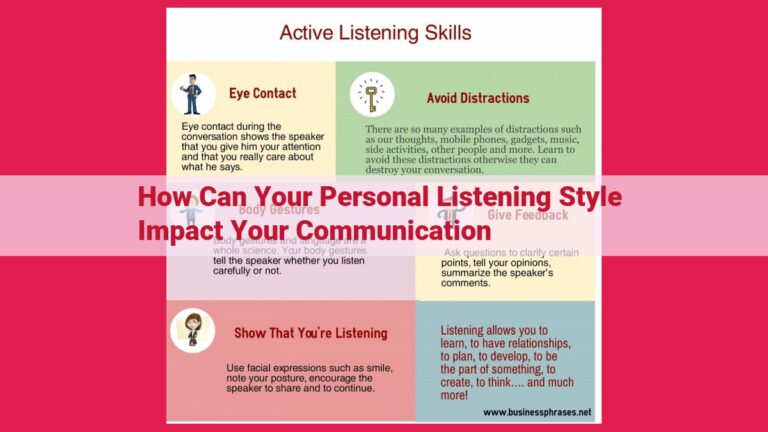Understanding Cultural Transmission: Internalization And Transmission Processes

Culture is transmitted and internalized through socialization (enculturation, acculturation, assimilation) and formal/informal transmission. Individuals learn cultural values, norms, and beliefs through observation, modeling, reinforcement, and punishment. These core cultural elements (values, norms, beliefs, rituals) are internalized, shaping individuals’ perceptions, behaviors, and identities within their cultural context.
Understanding Cultural Transmission
In the tapestry of human society, culture plays a vital role in shaping our identities, behaviors, and beliefs. Understanding the process of cultural transmission is akin to unraveling the intricate threads that connect us to our past, present, and future.
Socialization: The Foundation of Cultural Embodiment
From our earliest moments, we are immersed in a cultural milieu that shapes our values, norms, and beliefs. This process, known as socialization, begins with enculturation, the gradual absorption of our native culture through interactions with family, friends, and community. As we encounter different cultures, we may engage in acculturation, the selective adoption of elements from other cultures, or assimilation, a more complete merging into a new cultural group.
Formal and Informal Transmission: Channels of Cultural Dissemination
Cultural transmission takes on various forms. Formal transmission occurs through institutionalized channels such as schools, religious organizations, and the media. These institutions actively pass on cultural values and norms through curricula, teachings, and information dissemination.
On the other hand, informal transmission happens through everyday interactions, observations, and experiences. We learn about our culture by observing our parents, watching television, and participating in social events. These informal channels subtly reinforce and shape our cultural values and beliefs.
Socialization: Enculturation, Acculturation, Assimilation
Culture is a complex and dynamic system of shared beliefs, values, norms, and behaviors that shape the way we live. It is passed down from generation to generation through a process called socialization, which is the process by which individuals learn and internalize the culture of their society.
Enculturation is the primary form of socialization, and it begins in infancy. Through encultration, we learn the basic values, beliefs, and norms of our culture. This process is largely unconscious, and it happens through our interactions with family, friends, and other members of our community.
Acculturation is the process by which individuals learn the culture of a new society. This can happen when we move to a new country, or when we come into contact with a different culture through work, school, or other activities. Acculturation can be a challenging process, as it requires us to learn new ways of thinking and behaving.
Assimilation is the process by which individuals fully adopt the culture of a new society. This can happen when we stay in a new country for a long period of time, or when we have close contact with members of the new culture. Assimilation can be a difficult process, as it requires us to give up some of our own cultural identity.
Cultural Transmission: Formal vs. Informal Transmission
Culture is transmitted through both formal and informal channels. Formal transmission occurs through institutions such as schools, churches, and the media. Through formal transmission, we learn about the history, values, and norms of our culture.
Informal transmission occurs through everyday interactions with family, friends, and other members of our community. Through informal transmission, we learn about the unspoken rules of our culture, and we develop our own sense of identity.
Both formal and informal transmission are important for the maintenance and transmission of culture. Formal transmission provides us with a foundation of knowledge about our culture, while informal transmission helps us to develop our own unique cultural identity.
Understanding Cultural Transmission: Socialization
Cultural transmission is the process of learning and internalizing the values, norms, and beliefs of a culture. This process begins at birth and continues throughout our lives. One of the primary mechanisms of cultural transmission is socialization, which encompasses the various ways in which individuals learn and adopt the behaviors and beliefs of their society.
Enculturation: Cradle of Cultural Identity
Enculturation is the process by which individuals learn the values, norms, and beliefs of their native culture. This process begins in infancy and continues throughout childhood and adolescence. Through a combination of observation, modeling, and reinforcement, children learn the acceptable behaviors, beliefs, and practices of their culture.
Acculturation: Adapting to New Cultural Landscapes
When individuals move to a new culture, they undergo a process of acculturation, which involves learning and adopting the values, norms, and beliefs of the new culture. This process can be challenging, as it requires individuals to balance their new cultural values with their previous cultural background.
Assimilation: Blending into the Cultural Tapestry
In some cases, individuals may choose to assimilate into the new culture, which involves completely adopting the values, norms, and beliefs of the new culture. This process often involves abandoning their previous cultural identity. Assimilation can be a difficult and stressful process, as it requires individuals to renounce their cultural heritage.
Understanding the different types of socialization processes is crucial for comprehending how individuals learn and adopt cultural practices. By examining the mechanisms of enculturation, acculturation, and assimilation, we gain a deeper appreciation for the complexities of cultural transmission and its impact on individual identity.
Cultural Transmission: Formal vs. Informal Transmission
Understanding Cultural Transmission
Culture shapes our lives, guiding our behaviors, beliefs, and values. It’s a complex tapestry woven from the threads of shared experiences and learning. To truly grasp the concept of cultural transmission, we must explore the journey of how these cultural elements are passed down from generation to generation.
Socialization: The Enculturation, Acculturation, and Assimilation
From birth, we embark on a lifelong process of socialization, where we absorb the norms, values, and beliefs of our surroundings. Enculturation refers to the primary transmission of culture within our own society, while acculturation involves adapting to a new cultural context when migrating or coming into contact with other cultures._ Assimilation is the process of fully integrating into a new culture, adopting its values and behaviors.
Formal vs. Informal Cultural Transmission
Cultural transmission takes place through both formal and informal channels. Formal transmission occurs through explicit instruction in schools, religious institutions, and other formal settings. It involves intentional teaching of cultural rules, history, and values. In contrast, informal transmission is more subtle and pervasive, occurring through everyday interactions with family, friends, and the broader community. It involves unspoken norms, shared practices, and the imitation of role models.
Cultural transmission is an ongoing process that shapes who we are as individuals and as members of society. By understanding the mechanisms of cultural internalization, we gain insight into the forces that influence our thoughts, behaviors, and beliefs. Embracing the diversity of cultural perspectives enriches our understanding of the human experience and fosters empathy for different ways of life.
Mechanisms of Cultural Internalization: How We Learn and Adopt Cultural Practices
- Observational Learning:
Like a sponge, we absorb cultural practices by observing how others behave. From childhood, we watch our parents, teachers, and peers model desired behaviors. These observations shape our understanding of acceptable and unacceptable actions, fostering a sense of cultural competency.
- Modeling:
Cultural practices are often passed down through modeling, where individuals imitate the behaviors and values of influential figures. Role models, such as parents, teachers, or celebrities, serve as cultural transmitters, demonstrating how to navigate social situations, interact with others, and express our cultural identity.
- Reinforcement:
Positive reinforcement encourages individuals to adopt cultural practices by rewarding them for adhering to cultural norms. For example, praise or recognition for following social etiquette reinforces the importance of these behaviors. Conversely, negative reinforcement discourages certain behaviors by imposing consequences, such as disapproval or social ostracism.
- Punishment:
Punishment can also play a role in cultural internalization by deterring individuals from engaging in behaviors that are socially or culturally unacceptable. Severe punishments, such as physical or legal consequences, can effectively suppress unwanted cultural practices.
By understanding these mechanisms of cultural internalization, we gain insight into how individuals learn and adopt cultural practices. Whether through observation, modeling, reinforcement, or punishment, these processes shape our cultural identity and enable us to function within our social and cultural contexts.
Mechanisms of Cultural Transmission: Internalizing Cultural Practices
The transmission of culture involves more than just exposure to societal norms; it entails actively internalizing them, making them an integral part of our beliefs and behaviors. This process occurs through various mechanisms, each playing a crucial role in shaping our cultural identities.
Observation: Children and adults alike are keen observers, absorbing cultural practices through mere exposure. By observing others within their social networks, be it family, friends, or society at large, individuals unconsciously learn and emulate behaviors that conform to cultural expectations. This process of observational learning is particularly powerful in shaping our understanding of social norms.
Modeling: Similar to observation, modeling involves imitating the actions and behaviors of specific role models, who may be parents, teachers, or respected figures in society. By observing and replicating the actions of these influential individuals, we internalize their behaviors and beliefs, aligning ourselves with their cultural values.
Reinforcement: Positive reinforcement strengthens behaviors that align with cultural norms. When individuals are rewarded or praised for conforming to societal expectations, they are more likely to repeat those behaviors. This reinforcement can come from parents, peers, or even the wider society, shaping our understanding of what is considered socially appropriate and desirable.
Punishment: On the other hand, negative reinforcement or punishment serves as a deterrent against behaviors that deviate from cultural norms. When actions go against societal expectations, they may be met with disapproval, criticism, or even social ostracism. This negative feedback reinforces the unacceptability of certain behaviors, ensuring that individuals conform to the cultural boundaries set by their society.
Understanding Cultural Transmission
The intricate tapestry of our beliefs, values, and norms weaves together the fabric of our cultures. These cultural components are not innate but rather learned and internalized through a process known as cultural transmission. Just as a river meanders through a landscape, shaping its surroundings, cultural transmission etches itself upon our minds, shaping our thoughts, behaviors, and identities.
Socialization: The Foundation of Enculturation
Like a newborn babe taking its first breath, we enter the world as blank slates. Our socialization, the cradle of enculturation, begins at the tender age of childhood. Through a kaleidoscope of interactions with our family, peers, and community members, we absorb the cultural beliefs, values, and norms that define our social milieu. This process, like a gentle breeze, molds us into the individuals we become.
Formal and Informal Transmission: Two Streams of Cultural Knowledge
Cultural transmission flows through two distinct channels: formal and informal. Formal transmission, like water flowing through an aqueduct, is institutionalized in our schools, universities, and religious organizations. It provides a structured framework for learning about our cultural heritage, offering lessons on history, literature, and the arts. On the other hand, informal transmission, like a meandering river, weaves its way through our daily lives. It occurs in the casual conversations we have with family and friends, the stories we share, and the rituals we observe. Both formal and informal transmission play vital roles in shaping our cultural understanding.
Modeling: A Mirror to Cultural Internalization
In the tapestry of cultural transmission, modeling plays a pivotal role. It’s a process where individuals learn through observation of their social surroundings. Like children mirroring their parents, we subtly absorb cultural norms and practices by watching how others behave.
Storytelling: Imagine visiting a foreign country for the first time. As you navigate the unfamiliar streets, you notice a group of locals greeting each other with a peculiar handshake. In that instant, your curiosity is piqued. Unconsciously, you observe their gestures and mannerisms, absorbing the subtle nuances of their social interactions.
This is the power of modeling. Without explicit instruction, we internalize cultural behaviors by carefully observing and imitating those around us. It’s like a silent dance, where we learn the intricate steps of our cultural choreography by following the lead of others.
Cognitive Apprenticeship: Modeling is not just a passive process but an active one. As we observe, we develop a cognitive apprenticeship with our surroundings. We try to understand the logic behind the actions we witness, which leads to a deeper internalization of cultural values and norms.
The Ripple Effect: The impact of modeling extends beyond the individual. It creates a ripple effect, where behaviors and customs are passed down from generation to generation. Elders serve as role models for the young, shaping their perspectives and transmitting the wisdom of their ancestors.
In conclusion, modeling is a crucial mechanism in cultural transmission. Through observation and imitation, individuals seamlessly absorb the intricate nuances of their surroundings, fostering a sense of belonging and continuity within society. It’s a process that weaves together the threads of our cultural fabric, creating a tapestry that tells the story of our collective human experience.
Reinforcement
Reinforcement
-
Positive Reinforcement: Rewarding individuals for displaying desired cultural behaviors.
- For example, a teacher praising a student for following class etiquette reinforces the value of respect and politeness in the classroom environment.
-
Negative Reinforcement: Removing or avoiding unpleasant consequences to encourage desired cultural practices.
- For instance, a family withholding privileges from a child who misbehaves reinforces the importance of adhering to family rules and expectations.
-
Social Reinforcement: Approval and validation from peers, family, or society for conforming to cultural norms.
- When individuals receive positive attention for participating in traditional festivals or religious ceremonies, it reinforces their sense of belonging and cultural identity.
Punishment: A Powerful Mechanism of Cultural Internalization
Within the intricate tapestry of cultural transmission, punishment emerges as a potent force that shapes the internalization of cultural norms. It serves as a disciplining hand, reminding individuals of societal boundaries and the consequences of deviance.
When punishment is employed judiciously, it can reinforce positive behaviors and curb undesirable ones. Consider the example of a child who is reprimanded for misbehaving in public. The fear of further punishment instills in them the importance of adhering to social norms and behaving respectfully. The punishment acts as a deterrent, shaping the child’s future actions to align with cultural expectations.
Punishment also plays a role in maintaining social order. When individuals transgress communal boundaries, the threat of punishment serves as a reminder of the consequences of their actions. This ensures that disruptive behavior is kept in check, preserving societal harmony and fostering a sense of collective safety. It reminds us that there are consequences associated with our actions and that we must consider the impact of our choices on both ourselves and those around us.
It is crucial to note that punishment should be administered fairly and justly. Excessive or arbitrary punishment can undermine its effectiveness and erode trust in social institutions. When punishment is used as a means of oppression or control, it can cripple individuals and stifle cultural growth. Therefore, it is essential to ensure that punishment is proportional to the offense and that it is applied impartially.
Internalized Cultural Components
Culture is a complex tapestry woven with countless threads, each representing a unique aspect of how people live, think, and interact. The core elements of culture, which include values, norms, beliefs, and rituals, are transmitted and internalized by individuals through a myriad of processes.
Values are the guiding principles that shape a culture’s priorities and beliefs. They define what is considered good, desirable, and important. For example, in some cultures, family is revered as the foundation of society, while in others, individualism reigns supreme.
Norms are the expected behaviors that govern how people interact within a culture. They establish rules and guidelines that ensure social order and cohesion. From table manners to dating customs, norms vary greatly from culture to culture.
Beliefs are the accepted truths that form the foundation of a culture’s worldview. They shape people’s understanding of the world, their place in it, and their relationship with the supernatural. Beliefs can range from religious doctrines to superstitions and can have a profound impact on individuals’ lives.
Finally, rituals are symbolic practices that embody and reinforce cultural values and beliefs. They can take many forms, from religious ceremonies to festive celebrations. By participating in rituals, individuals strengthen their connection to their culture and pass on its traditions to future generations.
Subheadings:
- Values: Principles and Beliefs
- Norms: Expected Behaviors
- Beliefs: Accepted Truths
- Rituals: Symbolic Practices
Internalized Cultural Components: The Core Elements of Culture
As individuals navigate through life, they absorb and internalize profound elements of their culture, which shape their values, behaviors, and beliefs. These core components form the bedrock of cultural identity and provide guidance for daily living.
Values: Guiding Principles and Beliefs
Values represent the fundamental principles that guide a society’s behavior. They reflect the collective beliefs and aspirations of its members, often focusing on concepts such as justice, honesty, and compassion. These values influence decision-making, moral judgments, and ethical considerations, shaping the fabric of social interactions.
Norms: Expected Social Behaviors
Norms define the acceptable behaviors within a culture. They outline standards for speech, dress, interpersonal relationships, and civic conduct. Norms ensure harmony and cohesion within society by providing a shared framework for social expectations. Adherence to norms reinforces the sense of belonging and social acceptance, while deviations can lead to disapproval or sanctions.
Beliefs: Deeply Held Truths
Beliefs are deeply held assumptions about the world and our place within it. They are passed down through generations and often draw inspiration from religious teachings, cultural myths, or scientific discoveries. Beliefs influence our perception of reality, shape our worldview, and provide a sense of purpose and meaning.
Rituals: Symbolic Ceremonial Practices
Rituals are formalized, symbolic practices that hold deep cultural significance. They commemorate life events, celebrate cultural traditions, and foster a sense of community. Rituals often involve specific actions, gestures, and words that reinforce shared values and beliefs. By participating in rituals, individuals strengthen their connection to their culture and experience a profound sense of belonging.
Understanding Cultural Transmission
Cultural transmission is the process by which cultural values, norms, and beliefs are learned and internalized by individuals. This process begins in childhood, where children learn the basic tenets of their culture through socialization. As they grow, they are exposed to a wider range of cultural influences, both formally (through education and religious institutions) and informally (through peers, media, and experiences).
Mechanisms of Cultural Internalization
Individuals learn and adopt cultural practices through various mechanisms, including:
- Observation: Observing others’ behaviors and actions
- Modeling: Imitating the behavior of respected role models
- Reinforcement: Receiving rewards or positive feedback for conforming to cultural norms
- Punishment: Facing consequences for violating cultural expectations
Internalized Cultural Components: Values
Values are the fundamental principles and beliefs that guide our behavior and shape our perspectives. They provide us with a sense of purpose and direction, and are often deeply ingrained in our psyches.
Values are learned through a combination of socialization and personal experience. We learn them from our parents, teachers, peers, and other members of our social networks. We also learn them through our own experiences as we navigate the world and interact with different cultures.
Over time, values become internalized, meaning they become part of our core identity. They shape our choices, decisions, and actions. They influence our relationships, our work, and our overall well-being.
Some examples of core values include:
- Honesty: Being truthful and trustworthy
- Integrity: Adhering to moral principles
- Compassion: Feeling empathy and concern for others
- Respect: Valuing and treating others with dignity
- Responsibility: Taking ownership of our actions and commitments
Norms: Expected Behaviors
At the heart of every culture lies a tapestry of unwritten rules, known as norms. These implicit expectations govern how individuals behave, think, and interact within their social groups. Norms are not explicitly stated but are deeply ingrained through observation, modeling, and socialization. They provide a compass for our actions, guiding us in what is considered acceptable and inappropriate.
Norms can be as subtle as the way we greet each other or as profound as the values we hold dear. They shape our communication patterns, dining etiquette, and even our fashion choices. By following norms, we display our membership in a particular group and maintain social harmony.
Some norms are universal, shared across cultures. For example, most societies frown upon stealing and violence. However, many norms vary significantly from culture to culture. In some societies, it is considered polite to slurp one’s food, while in others, it is seen as rude.
Norms can be positive, encouraging desirable behaviors, or negative, discouraging unacceptable actions. Positive norms, such as respecting elders or helping those in need, foster cooperation and promote a sense of community. Negative norms, such as bullying or ostracizing outsiders, can have detrimental effects on individuals and society as a whole.
Understanding cultural norms is crucial for effective communication and cross-cultural interactions. By being aware of the norms that govern different cultures, we can avoid misunderstandings and build bridges between diverse groups.
Beliefs: Accepted Truths
Culture shapes our beliefs, the fundamental truths we accept without question. They form the lens through which we perceive the world and make sense of it.
In a small village nestled amidst rolling hills, a young boy named Liam grew up immersed in a culture that held the belief in ancestor spirits. He was told that his deceased grandparents watched over him, guiding his steps and protecting him from harm. As Liam went about his daily life, the presence of his ancestors was a comforting sense in the back of his mind.
Liam’s belief in ancestor spirits influenced his decisions and actions. He would often seek guidance from his ancestors before embarking on a new endeavor or making an important choice. He also believed that his actions would reflect upon his ancestors’ memory, encouraging him to always strive for excellence and honor their legacy.
As Liam grew older, his belief in ancestor spirits continued to shape his life. It gave him a strong sense of identity and connected him to his cultural heritage. It also provided him with a source of comfort and support, knowing that he was never truly alone.
Throughout history, cultures have held diverse beliefs, from the supernatural to the scientific. These beliefs have played a vital role in shaping human societies and influencing the way we live, think, and interact with the world around us.
Rituals: Symbolic Practices of Cultural Transmission
Embracing the Sacred and Mystical
Rituals, as intrinsic components of culture, paint vivid tapestries that weave together shared beliefs, values, and traditions. They transcend the mundane, offering profound experiences that connect individuals to the sacred and mystical. Through elaborate ceremonies, symbolic gestures, and orchestrated performances, rituals provide a window into the very essence of a culture.
The Power of Observation and Imitation
Cultural rituals are often passed down through observation and imitation. As children witness their elders participating in these practices, they unconsciously absorb their symbolic meanings. This process of enculturation shapes their understanding of the world and their place within it.
Meaningful Moments and Collective Identity
Rituals create shared memories that strengthen the bonds within a community. They provide a sense of belonging and continuity, reminding individuals of their collective identity. Wedding ceremonies, religious festivals, and coming-of-age rituals mark significant moments in our lives, giving them profound emotional weight.
Harnessing the Transformative Power
Initiation rituals, in particular, serve as transformative experiences. They symbolize a transition from one stage of life to another, marking key milestones in an individual’s journey. Throughout history, initiation rituals have been used to confer status, test courage, and communicate cultural wisdom.
The Living Tapestry of Culture
Rituals remain vibrant and dynamic expressions of cultural transmission. They evolve over time, reflecting changing values and social norms. By understanding the role of rituals in shaping our beliefs and behaviors, we gain a deeper appreciation for the intricate tapestry of human culture.



